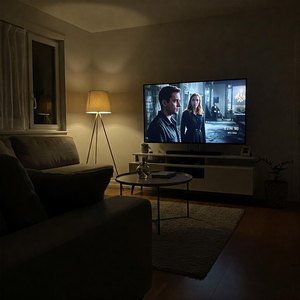
Effective Shopping Tips to Save Money and Cut Costs
For those with families, shopping while spending as little as possible can make a big difference at the end of the year. Knowing how to shop wisely can not only enable us to save money, but also puts us in a position to deal with those little unforeseen events that can arise in our daily lives, saves us time and is also good for our health.
These tips are based on my experience and focus mainly on food shopping at the supermarket because it is a necessity and because supermarkets are now widespread. I offer below as a suggestion, a list of rules I have given myself. Don't forget to let me know your opinions in the comments because your experiences can be useful to me as well as to other users of the site.
Rule #1. Consider all factors
Many of us overlook the fact that we travel by car. The car also has a cost in terms of fuel, maintenance and management. Shopping in a faraway place if we buy a few things could be detrimental. In my line of work, I have met more or less shrewd people who prefer to travel around the world before buying something of little value.
We always try to put on the other side of the scales the fact that if a packet of pasta costs 10 cents less, it makes no sense to spend fifty times more in petrol to go to that particular supermarket. Let's not forget that all supermarkets have more expensive and less expensive items and that therefore even if we save money buying pasta, we will certainly spend more buying sauce or something else and therefore we will have lost money on the trip and money on other ancillary or complementary things.
Rule #2. The notebook is your friend
The shopping list was a very common thing until recently. With affluence, we have lost this healthy habit and may get carried away by the shopping frenzy. Later on, we will talk about how marketing might induce us to buy things we do not need. For the time being in this paragraph, let us focus on how to organise our notebook.
The notebook is also useful for those who are on a particular diet in order not to lose track of their nutritional intake, but the most important thing is that it contains certain information.
Good or bad, each of us has had our own dietary education and so we are prone to buy the same things more or less all the time. Having a list of these things to organise the times of the week when we can go and buy them is certainly an advantage that should be exploited.
We will then know exactly where the cheapest item we need at that time is and possibly be able to make detours to buy it so that we can avoid going there on purpose. Having a list of items we need, usually related to certain places, will undoubtedly allow us to better manage our shopping during the week.
A shopping list that we should stick to, helps us to avoid being lured by other items that we do not need. In case we realise that we have forgotten to write something down, we will add it to the list. If it is an item we do not usually use, we will make an asterisk next to it to remind us that we are buying something just for that moment. The fewer asterisks on our shopping list, the less we will spend.
Rule #3. Better quality than quantity
It is my opinion that there are several reasons why a person should focus on quality rather than quantity. While it is true that there are many industrial and mass-produced products that can save us money, it is also true that a cheap, low-quality product may in the long run be handled, packaged and stored badly.
Better quality products normally follow more accurate distribution flows and should, at least in theory, meet those minimum hygiene and production standards necessary for consumer health. Let us always remember that health has no price and doctors and treatments (rightly) are not cheap.
Better to spend slightly more for a slice of meat cut in front of us than to choose frozen things of dubious nutritional value and dubious production. By choosing to penalise quality, we risk having stock in the fridge that, once expired, we would have to throw away.
Let us be very careful not to fall into the trap of fake quality. We are not saying in this article that a product has to be a famous or advertised brand to be of quality.
Rule #4. It is better to shop several times and in different places
We are not professionals at preserving food, so in order to enjoy the highest quality, it is always better if you can, to do your shopping in minimum quantities during the week. My advice is to choose one day every fortnight to dedicate to the bulkiest and easiest things to store such as drinks, pet food, vacuum-packed foods like rice, sugar, salt and honey.
Another reason why it is more convenient to shop more often by buying fewer things is the fact that on that particular day, there might be items on offer or expiring that would be particularly cheap. By increasing the frequency, you increase the likelihood of being able to access different promotions but beware of marketing tricks that we will discuss later.
Many supermarkets have items that are very cheap and others that are very expensive compared to competitors. For this reason, it is wise to write down in the famous notebook where something is cheaper. Remember to keep the notebook up-to-date because prices may change on a rotating basis so that what was cheap in one supermarket will no longer be cheap and vice versa.
Rule #5. Pay attention to marketing tricks
In itself, marketing is not a bad thing. It is an economic science based on statistics and psychology. It is a tool that helps the seller to meet the needs of the customer while increasing sales. It serves to sell more in short. Marketing can, like any science be used well or badly.
Knowing some of the most common tricks can help us to be less impulsive and manipulative. It is important to understand the difference between marketing, advertising and reality. First, let us completely forget what we see in advertisements. By definition they serve to sell more. It is not necessarily the case that an object, just because it is advertised more, must also necessarily be of better quality. The costs of advertising inevitably affect the final price.
Selling is not as easy as it sounds because you are dealing with competition and therefore over the years, techniques have been adopted to push the user to consume more. Let's not feel antagonistic or cheated by this system, our society is based on consumption, the world has always been going this way, and not just for sales. Knowledge is power and here are a few thoughts.
Purchased items have to be put somewhere to be transported from the shelves to the till and from the till to home. Investing a few pennies in quality fabric bags to be used for containment and transportation can certainly save us a lot of money, make walking easier and prevent the very thin recyclable plastic bags from smashing glass bottles to the ground once we leave the supermarket.
Inside the supermarket there are two types of containers that are normally always made available to the customer. A kind of trolley that serves those in a hurry, and the classic larger trolley with four wheels. Since our mind partly perceives the amount of shopping we have done based on how full this trolley is, a marketing tactic is to renew them in the long run with larger and more capacious specimens. The user, accustomed to shopping by eye, will certainly be in for a nasty surprise once he arrives at the checkout.
It has happened to all of us at least once to notice that someone looks inside our trolley with the intention perhaps of seeing what we are buying and what our budget is. Never trust your visual perception.
Trolleys where there is also a child seat have the incidental (perhaps) function of calming us down so that we can concentrate more on shopping. The reason why bulky items are usually found at the end of the supermarket route or near the tills is precisely because, by shopping first, we would have the perception that we have filled the trolley.
This marketing trick, however, is not followed to the letter by all supermarkets, many times, the trolleys are related to the size of the supermarket. Keep in mind that not all marketing rules are applied by all supermarkets and in any case this is not an exhaustive guide.
Normally, bulky items such as drinks, water and pet food are placed last in the imaginary route into the supermarket. If they were made available immediately at the entrance or in an immediately accessible and welcoming place, they would certainly fill the trolley sooner, rendering ineffective the feeling of emptiness that drives us to buy more.
Normally, shelves are arranged in such a way as to allow a spiral or zigzag path, precisely to give people the opportunity to view all the items on sale before reaching the checkout.
This trick is useful to better control and supervise merchandise, people and otherwise direct them so that they do not get lost. It is widely used in large petrol stations that have a small supermarket inside.
If we like chocolate, we will practically feel in heaven looking at the shelves of sweets. We will naturally linger longer and this will increase the likelihood that we will give in to the temptation to buy something.
Another example is the crates of vegetables and fruit that are usually found at the beginning of the route so that the customer, who is not yet tired, will linger longer and in a more favourable mood, to evaluate these kinds of items that normally give the supermarket a higher profit margin.
If the objective is to save money, there is no point in going round the whole supermarket to see what is there or to pass the time because you will inevitably buy something you do not need. The less time spent in temptation, the less chance there is that we will buy something we do not need.
Usually the products that are put at eye level are those of brands that can afford it. You may be amazed at how much you can save by simply lowering your eyes to devote your attention to those products at the bottom of the shelves.
The same applies to shelves that are very high whose products seem almost unreachable. Supermarkets that do not have special shelves for sweets could put sweets and toys at the bottom so that children, seeing them, will convince their parents to buy them.
I recommend bending at the knees when picking something from the bottom or you risk getting stuck. If you do not reach for the tallest products, avoid climbing over the shelf but call a supermarket employee for help.
A trick that has been used for a long time now is to put prices in cents because we have a tendency to only look at and evaluate the number before them. If something costs 1.99, our brain will tend to interpret it as costing 1.99, but it is practically 2.
This is a habit that is now well established and I am sure many of you reading this know this.
You may have noticed that from time to time items put up for sale have been moved around. This may serve to prevent people from jumping entire shelves. If we are looking for something we usually buy and it has been moved, we will normally also have to evaluate other shelves that we did not look at before and thus spend more time inside the supermarket to evaluate the items on sale.
Traditionally, basic necessities such as toilet paper are located at the end of our route so that we walk through all the aisles increasing the likelihood that other products that we do not really need will attract us.
Usually, these are useless, accessory or personal care products. Examples are sweets, a cooler drink than the one on the shelves, razors, refills and what not. When we are queuing at the checkout, something has to be done besides meticulously observing the contents of the trolley of those before us, and here, we may be tempted to spend our time considering buying what is not indispensable.
A practice that I have seen done in more than one supermarket is to haphazardly place products inside a container. These containers have a little bit of everything inside, from drills to shoes, from toothpaste to clothes pegs.
Although many make an effort to apply even the slightest discount, these are usually items that have no real convenience and serve to give the idea that there is some kind of sale or outright sale.
Have you noticed that there are very cheap printers with ink that is very expensive compared to their price? The same happens with spare parts for some toothbrushes and the like. The spare parts are priced slightly less than the whole kit. The buyer then, in order to avoid wasting the item, feels almost obliged to buy the spare parts, which in themselves, should not be so expensive.
To quote the little prince by Antoine de Saint-Exupéry, the essential is invisible to the eyes. As most of us know, the suit should not make the monk but in fact it does. People like attractive things and that is why they tend to buy more if there is a beautiful picture on the box (for illustration purposes only) that makes us imagine what the final product will look like.
Furthermore, it has been proven that a more attractive image (in any field), arouses much more trust and expectations in people.
The things that we buy again and again, because they are necessities, are usually found at the end in such a way that they are bought last. Since they are necessities, the supermarket is not afraid not to sell them and therefore prefers to make sure that the customer is encouraged to evaluate all the rest of the sample in the other aisles before reaching the goods he will surely buy.
It is also important to remember that each product is designed to attract a certain type of customer. This is nothing new. To give an example, items aimed at children normally have brighter colours, those aimed at women will have softer pastel colours synonymous with delicacy, those for men normally have darker, more intense colours.
The shapes of men's items are more pronounced, well-defined and sometimes angular. Those dedicated to female consumers normally have much more tapered, small and rounded shapes.
Of course, if I am buying a certain type of the very famous hazelnut chocolate, the name of which I will not mention for obvious reasons, I can also find other types of jams and sweet spreads in the immediate vicinity. This makes the arrangement of goods more orderly and immediate for those who intend to find them but some supermarkets. They might place biscuits or similar spreads nearby.
This technique is called cross-selling and consists of offering different items that are normally used together. It is not normally done with milk and biscuits because milk is bulky and would take up a lot of space in the trolley for the reasons stated above. A complementary technique to this is to put one product on offer and maintain or increase the price of the complementary product.
The above technique is also used for advertising. It is a well-established practice to advertise by leafleting, website or other means, items that could be complementary to others. A more unfair one is to include in the flyer items that are in minimum quantities or are already sold out so that the consumer goes there convinced to buy a certain type of item and not finding it, inevitably buys another brand at full price.
Size and quantity are important in order to understand whether or not a product is actually cheap. Some manufacturers, in order to sell more, produce bulkier packages that contain less product. This strategy is normally adopted for products that normally cost more than the package.
Others, for products with a lower profit margin, prefer to produce smaller packages so that less product is available and therefore the product will have to be bought much more frequently.
In some countries, there are special taxes or production costs for certain elements used to contain or package items, which may force the manufacturer to adapt them to avoid too high costs.
The convenience of a product over another brand, lies in the fact that for the same quantity, it must have a lower price. Many countries require by law to include the unit price and also the price by weight. But if you have noticed, to muddy the waters, it is rare to see the price per 1 kg of product on labels.
There are items whose labels show that a particular cheese costs 2 per 100 grams, others whose labels show that it costs 3 per 180 grams. Which one is cheaper? Because of the hurry, the person pushing us forward and also laziness, we hardly ever stop to calculate how much a product actually costs per gram.
However, we are very careful not to buy the cheapest food product because it could hide the nasty surprise of being of very poor quality. And this could be extremely detrimental to our health.
A conscientious seller will surely prefer to throw away food that has been wrongly stored or emits a strange smell rather than put it on sale again at a cheaper price.
Rule #6. Everything in its time
Always choose vegetables that are in season. For example, if we refer to the most popular fruit, the rule of convenience ‘should’ be as follows. In winter, oranges, mandarins, grapefruits, pomegranates, pears, kiwis, lemons, kumquats, citrons, apples, persimmons, clementines, German medlars, sorbs and bergamot. In spring, strawberries, early cherries, lemons, medlars, plums.
In summer, apricots, melons, figs, cherries, peaches, plums, all varieties of watermelon including watermelon, yellow watermelon, blueberries, blackberries, raspberries, strawberries, Sicilian bananas, figs and sour cherries. In autumn, pears, pomegranate, persimmons, dates, jujubes, chestnuts, citrons, grapes, pistachios, pink apples, kiwis, lemons and pine nuts.
Of course, this is only a partial list because each place has its own vegetables and its own timing for production and distribution. It will not be too difficult for you to inform yourself using Google. There are applications and before the advent of technology, a design called the ‘wheel of health’ was used in agriculture.
Rule #7. Laziness is our enemy
It is not an easy thing to spend as little as possible because the system is designed to encourage consumption by the customer. I have been told in the past that I am a spender. As you can see, the reality of the facts, which could also match your behaviour, is not that I don't know how to shop but that I am lazy.
There is nothing wrong with spending money if you are on holiday or have plenty of it. Shopkeepers, employees and all that revolves around them must also be able to survive. Money should circulate so that the economy is as healthy as possible. There are some people, however, who cannot spend, and this article is especially addressed to them.
Laziness is the one thing that life does not forgive us and constancy is the best virtue to achieve a goal. There is no point in trying to do as this article says just once and then continuing with the same routine as always. Then you will have invested your time badly and it would be counterproductive.
Rule #8. Savings are also made at home
One thing that is too often underestimated is the fact that you have to pay the utmost attention to how you store things. There is no point in blaming the supermarket if we do not store food properly when we get home.
There are foods that, once opened, need to be vacuum-packed, others should never be thawed and refrozen, and still others need to avoid direct contact with light and certain temperatures.
Let us remember that at home, to avoid throwing away food that has gone bad or worse, to avoid feeling sick, we should follow very similar rules to which all food sellers are bound.
Rule #9. History is important
Studying history is important to avoid making the same steps that led to certain mistakes. The experience of our grandmothers is of paramount importance to understand what is most convenient and genuine. Let us always trust what our grandparents tell us.
Another thing that is compulsory in some countries in the case of discounts is the presence of the original price on the label. We know very well that we are attracted by a quality product with a 50 per cent discount, but besides asking ourselves why that very product is on sale, we should also ask ourselves how much it cost before then.
A conscientious retailer makes the right price because he has his own costs to maintain his business and family like us. Always be wary of prices that are too low because it is not normal for a business to overprice without good reason.
We have always been led to think that the trader profits disproportionately and thus have forgotten the importance of the right price. If a trader has such an influx of customers that he can sell 10 T-shirts for 50 money each, it is not normal that he can maintain the rent and salary for himself and his employees if he has a margin of only 10%.
Always buy by rewarding businesses that seem honest and healthy to you. Honesty is not always synonymous with price but with conscientiousness. Only a small part of the earnings physically goes into the pocket of the trader. The rest is lost in expenses and taxes.
Choosing to shop as a conscientious trader favours those businesses whose tenants do not use tricks to exploit human weaknesses in order to sell more. The price is always related to the amount of people who enter that shop and it is not always the case that the more people the better.
You should never buy anything you do not really need or just to try it on. In physical shops, unlike online shops, the right of withdrawal may not apply in some countries. That particular returned item might be sold as new to another person unaware of its history. Would you be happy if that happened to you?
Rule #10. Maximum politeness
The old rule that the customer is always right is just a tactic unscrupulous people have to make some mean people feel more comfortable at the expense of the dignity of employees.
Those who serve you when you set foot in a shop are not your slaves. They are people like you who have the right to express their opinions and above all have the right to their own dignity. A conscientious shopkeeper will have no problem telling you whether an item of clothing is more suitable for you.
Some of you at this point, might think that this paragraph is biased, that in fact you cannot trust the professionals in the shops regardless because they only think of their own profit, and that they are therefore in clear antagonism to you who want the highest quality at the lowest price.
For the avoidance of doubt, I invite you to put yourself in the shoes of a shop assistant. Difficult and rude customers make the latter weigh every single minute of his or her work and he or she will be more inclined to make the person responsible for this state of mind pay more for their time.
On the contrary, a sympathetic and friendly manner will almost predispose the salesperson to a state of mind of complicity, he will spend his time with you much more serenely, and the likelihood that he will give you a better discount or favour you in some way will increase significantly.
Always remember that while it is true that a good salesperson must always be able to put you at ease, it is not false attitudes and false servility that will help you save money. Usually, regardless of the reaction of the person in front of you, it is normal that if we are rude no one will favour us.
A salesperson receives an amount of insults and humiliation on a daily basis that you cannot even imagine, so by simply being polite, you may find that unknown doors will open up for you.










